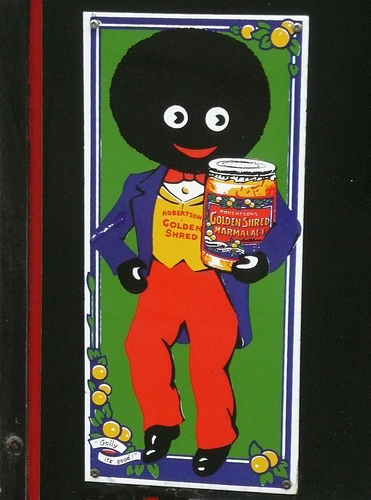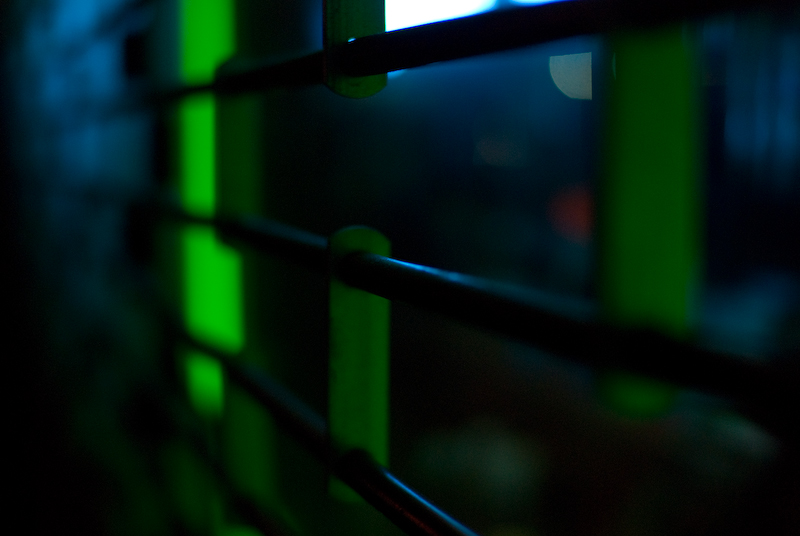|
|
LITR 5731 Seminar in
Sample Student
Submission
Spring Research
Post 1
|
|
Christine Ford
March 13, 2010
Golliwog: The Most Popular Children’s Toy You’ve Never Heard Of
Just a few weeks ago, I had never even heard of a golliwog, let alone knew about its long history in children’s literature and toys. I happened upon the topic while listening to the BBC online; there was a half hour radio documentary giving a brief history of the toy and stories, and of how attitudes have shifted towards the golliwog since its creation in the late 19th century. To understand all the fuss, a picture of a golliwog is required:

He is essentially a caricature of a black man, rather akin to the popular American character Little Black Sambo, and as such brings up many issues of racist imagery and of white people’s perceptions and acceptance of this sort of toy. My goal in this research post is to find out what a golliwog is and where it came from, both as a fictional character and as a toy, in order to give some background for American readers who most likely are unfamiliar with him.
According to David Pilgrim’s excellent article in the online Jim Crow Museum of Racist Memorabilia, the entire idea of the golliwog is the product of children’s author and illustrator Florence Upton. Her book The Adventures of Two Dutch Dolls is the first to feature the character, who lives in a toy shop with the two female Dutch dolls. Golliwog is a “little black ‘gnome’ [who] wore bright red trousers, a red bow tie on a high collared white shirt, and a blue swallow-tailed coat. He was a caricature of American black faced minstrels…she named him Golliwogg” (Pilgrim). Upton wrote several other Dutch doll and Golliwog books, all hugely popular in England, and eventually toy companies started making doll versions of Golliwog. Beyond just books and dolls, the market was flooded with other golliwog paraphernalia (since the character had not been copyrighted) including “Christmas cards, badges, early 20th century teething rings, trade cards, toys, dolls…, games, postcards and confectionery” (“Gollies”, V&A Museum of Childhood). I tried to find out where the name “golliwog” came from, and was unable to turn up much definite information. The OED lists Upton’s story as the first use of the word and has a possible etymology of “perh. suggested by GOLLY int. (= God) and POLLIWOG, POLLYWOG (dial. and U.S., = tadpole).” Other less reputable online resources also reference golliwog as being derived from pollywog, and all seem to agree that Upon coined the term.
Throughout the 20th century, golliwog stories and dolls remained popular in England and its colonies and throughout Europe. I have found almost no research that mentions golliwogs in the United States, nor have I talked to anyone born here who ever had one of the dolls or read the stories, which leads me to believe that the golliwog never really caught on here. Perhaps the one person who did the most to perpetuate the golliwog in the 20th century is Enid Blyton, a hugely popular British children’s author. She wrote an incredible number of books and has sold over 600 million copies since she first began writing in 1922 (Wikipedia). As my classmate Omar, himself familiar with Blyton’s books from his childhood in India, pointed out, her “Noddy” series of books had a couple of recurring golliwog characters: Mr. Golly, who owns a car garage, and the Gollies, who were villains. The other ubiquitous form golliwogs took was, of all things, as mascot for Robertson’s jams in England.

People could send off for the above figurines, and despite considerable public outcry from the 1980’s forward, the golliwog remained Robertson’s mascot until 2001 (“Gollies”, V&A Museum of Childhood).
By the 1960’s, the term “wog” was used as a racial
slur against dark skinned people and is believed to come from the word
“golliwog.” Pilgrim says that wog “as
a racial epithet, …is comparable to nigger
or spic, though its
usage extends beyond any single ethnic group.” Due to increased racial
sensitivity, golliwogs are no longer the popular children’s toy they once were
in England, though I found many websites where people fondly recalled their
golliwog dolls and lamented that they are now seen purely as a racist artifact.
On the other hand, I found an equal amount, though noticeably American, who
insisted that the golliwogs had always been and would always be offensive to
black people and a sign of blatant racism.
By the end of all of my research, I found that I do
indeed know what a golliwog is and where it came from. I am still, however,
faced with the much more difficult question of how to interpret him, as a
modern, race-conscious American. He is a comical character in children’s stories
and a beloved doll—and yet he makes me undeniably uncomfortable. I can easily
describe his rise in popularity and subsequent fall, but I find it hard to
understand him as an acceptable children’s toy or an acceptable character at
all. This sense of discomfort I experience when faced with the golliwog spurs me
to find out in my next research post how minorities in Britain and its colonies
perceive him and how they have dealt with him over the years. History is
informative, but sometimes one has to push past the bare facts to find the human
truths beneath.
Pilgrim, David. The Golliwog Caricature. The Jim Crow Museum of Racist Memorabilia at
Ferris State University, November 2000. Web. 10 March 2010.
Tulloch, Carol. Gollies. The Victoria & Albert Museum of Childhood. Web. 13 March 2010.
Golliwog. Wikipedia. Web. 10 March 2010.
Noddy. Wikipedia. Web. 10 March 2010.
Enid Blyton. Wikipedia. Web. 10 March 2010.
Golliwog. Oxford English Dictionary, 2nd edition, 1989. Web. 13 March 2010.
“Good Golly, Bad Golly.” BBC. Radio 4, Online. 24 February 2010. Radio.


